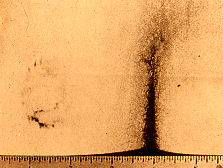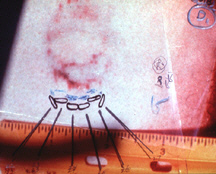 Over the past few years, some researchers have been looking at the possibility that an MRI (magnetic resonance imaging) brain scan can reveal whether or not someone is lying. In experiments, subjects are instructed to lie about certain things while an MRI monitors their brain activity. When the subject lies, the researchers look for differences in the patterns of brain activity. They have observed ‘differences’ when a subject is lying as opposed to when the subject is telling the truth.
Over the past few years, some researchers have been looking at the possibility that an MRI (magnetic resonance imaging) brain scan can reveal whether or not someone is lying. In experiments, subjects are instructed to lie about certain things while an MRI monitors their brain activity. When the subject lies, the researchers look for differences in the patterns of brain activity. They have observed ‘differences’ when a subject is lying as opposed to when the subject is telling the truth.
Here are two recent articles on the subject:
…….. From yesterday’s Washington Post Laris M. MRI polygraphy. Wash Post, 2012-08-26
…….. From the August, 2010 IEEE Spectrum (the official publication of the Institute of Electrical and Electronic Engineers) MRI Polygraph
There is even a company called No Lie MRI that is trying to commercialize the phenomenon. http://noliemri.com/
Now, let me comment on these developments from the standpoint of the scientific method, design of experiments, and logic. These “experiments” are nothing more than observational studies. The experiment may have a hypothesis, that is, when the subject “lies” we’ll see differences in brain activity, which, in the experiment, would be the “dependent variable”. However, this is very non-specific. What areas of the brain? What kind of activity? What extent of activity? What level of activity indicates a “lie” over a statistically significant population of subjects of representative ages, races, genders, IQ’s, and physical & mental health? And the most glaring shortcoming of these experiments is lack of control over independent variables. A properly designed experiment should have a single dependent variable and all independent variables should be controlled. That is, if the independent variable being measured is “lie or no lie”, all other independent variables must be constant throughout the experiment – age, race, gender, mental and physical health, IQ, amount of sleep, state of mind, …………..
It has already been observed that the MRI can be “fooled” if the subject imagines imperceptibly wiggling a finger or toe while lying.
I fear that we might be seeing yet another forensic junk science in the making. Conclusions based upon these studies are another example of forensics being driven by anecdotal, observational studies that get pushed through a process of flawed inductive reasoning. “I’ve seen a hundred roses, and they’re all red; therefore, all roses are red.” Or, “I’ve never seen anything like that before; therefore, it must be unique.”
So far, this technology also fails the question that most all forensics fail; “Show me the statistically valid data from which I can compute a probability of occurrence.” And by the way, even “fingerprints” fails this question.
One saving grace of many forensic disciplines is that they can be statistically valid in excluding a suspect from consideration. I don’t see that MRI scans are legitimate enough to even do that.
Science is in its infancy in terms of truly understanding the functioning of the human brain. MRI lie detection may some day be legitimate, but my prediction is that it will be decades, if not generations, from now.





























